- Home
- Virginia Woolf
Genius and Ink
Genius and Ink Read online
About the TLS
The Times Literary Supplement was born in January 1902. Its first ever front page bashfully stated that ‘during the Parliamentary session Literary Supplements to “The Times” will appear as often as may be necessary in order to keep abreast with the more important publications of the day’. Fortunately, the question of necessity was not left in the hands of literary journalists (who, we can imagine, might occasionally push for a holiday or two), and the title became a weekly one. A few years later, the TLS split entirely from The Times.
Since then, we have prided ourselves on being the world’s leading magazine for culture and ideas. Our guiding principle for the selection of pieces remains the same as it ever has been: is it interesting; and is it beautifully written? Over the years, our contributors have included the very best writers and thinkers in the world: from Virginia Woolf to Seamus Heaney, Sylvia Plath to Susan Sontag, Milan Kundera to Christopher Hitchens, Patricia Highsmith to Martin Scorsese.
The book you are holding is part of a brand-new imprint, TLS Books, by which we are striving to bring more beautiful writing to a wider public. We hope you enjoy it. If you want to read more from us, you’ll find a special trial subscription offer to the TLS at the back of this book.
In an ever-quickening culture of flipness and facility, fake news and Facebook, the TLS is determined to be part of the counter-culture of quality. We believe in expertise, breadth and depth. We believe in the importance of ideas, and the transformative power of art. And we believe that, in reading the TLS – in whatever form, be it in a magazine, online or in a book – you are supporting a set of values that we have been proud to uphold for more than a hundred years. So thank you for that.
Stig Abell, 11th Editor of the TLS
London, 2019
Works by Virginia Woolf
FICTION
The Voyage Out
Night and Day
Jacob’s Room
Mrs Dalloway
To the Lighthouse
Orlando
The Waves
The Years
Between the Acts
NON-FICTION
The Common Reader Vols 1 and 2
A Room of One’s Own
Flush
Three Guineas
Roger Fry
Copyright
TLS Books
An imprint of HarperCollinsPublishers
1 London Bridge Street
London SE1 9GF
The-TLS.co.uk
This eBook first published in Great Britain by TLS Books in 2019
Preface copyright © Ali Smith 2019
Introduction copyright © Francesca Wade 2019
Illustration copyright © Ella Baron 2019
Cover illustration by Shutterstock
A catalogue record for this book is available from the British Library
All rights reserved under International and Pan-American Copyright Conventions. By payment of the required fees, you have been granted the non-exclusive, non-transferable right to access and read the text of this e-book on-screen. No part of this text may be reproduced, transmitted, down-loaded, decompiled, reverse engineered, or stored in or introduced into any information storage and retrieval system, in any form or by any means, whether electronic or mechanical, now known or hereinafter invented, without the express written permission of HarperCollins.
Source ISBN: 9780008355722
Ebook Edition © November 2019 ISBN: 9780008355739
Version: 2019-10-17
Epigraph
Two things I mean to do when the long dark evenings come: to write, on the spur of the moment, as now, lots of little poems to go into P.H.: as they may come in handy: to collect, even bind together, my innumerable T.L.S. notes: to consider them as material for some kind of critical book: quotations? comments? ranging all through English literature as I’ve read it and noted it during the past 20 years.
Virginia Woolf, 1938
Contents
Cover
About the TLS
Works by Virginia Woolf
Title Page
Copyright
Epigraph
Preface
Introduction
Frontispiece
Charlotte Brontë
Hours in a Library
George Eliot
The Letters of Henry James
John Evelyn
On Re-reading Novels
How it Strikes a Contemporary
Montaigne
Joseph Conrad
Notes on an Elizabethan Play
Thomas Hardy’s Novels
Fanny Burney’s Half-Sister
Aurora Leigh
The Captain’s Death Bed
A Note on the Text
About the Author
Enjoyed the book?
Also from TLS Books
About the Publisher
Preface
By Ali Smith
Genius and ink: the phrase that gives this book its title has been notched out of ‘On Re-reading Novels’, one of the essays by Virginia Woolf written over two decades as a reviewer and critic for the Times Literary Supplement. Ostensibly a consideration of Percy Lubbock’s 1921 publication The Craft of Fiction, the real focus of ‘On Re-reading Novels’ is the beginnings of the critical attempt towards a fuller understanding of the novel as form. Woolf wrote it at a time when ideas about the shape of the novel were about to defy all former imaginings. James Joyce’s Ulysses had been serialized and passed around in bits and pieces for the preceding four years and was finally published in its entirety in early 1922; and Woolf’s own transformatory work had begun with her first truly great experimental novel Jacob’s Room, which she published three months after this essay appeared. You might say the whole notion of what a novel could be was being re-read.
So what makes a novel a novel, then? ‘Obviously there must be a process, and it is at work always and in every novel’, she writes in July 1922. ‘We must have been aware that a novelist, before he can persuade us that his world is real and his people alive, must solve certain questions and acquire certain skill. But until Mr. Lubbock pierced through the flesh and made us look at the skeleton we were almost ready to believe that nothing was needed but genius and ink.’ Thank you, Mr. L, she says, for the helpful attention paid to the concept of process, meanwhile she quietly infers that his splaying-open of the form is also a kind of killing.
When it comes to literary form and its relation to concepts of reality, or concepts of literary/literal aliveness in the form of the novel, Woolf would ask something a lot more vital from critical response. This collection lets its readers trace the formation of her own critical voice, through her responses to a range of classic (and not so classic) writers and literary forms. It charts a timeline of pieces via which her open, wry and intuitive reading of a work or a writer shifts in potency from an early brilliance that’s conscious of (and still a bit beholden to) deference to tradition, to the finding of a formidable vital intelligence of voice and critical form, one which would revolutionize the possibilities of critical writing.
She complains repeatedly in her diaries about how little she gets paid for it, but she clearly loved writing for the TLS. She also habitually, playfully, always fruitfully, tended to baulk against or question notions of establishment and authority, especially literary establishment, so it’s no surprise to find her in her diaries yo-yo-ing between feeling ‘important & even excited’ at being sent something to review, and by turn dejected, ‘rejected’, when no books from the Times arrive, though this ‘has the result of making me write my novel at an astonishing rate. If I continue dismissed, I sha
ll finish within a month or two’. But Woolf was also one of the earliest critics actively to defy the preconception of a divide between what’s called critical and what’s called creative writing. In her, the revolutionary novelist is still the critic, the revolutionary critic will always also be the novelist, and this open symbiosis makes for a body of work that ensures the imaginative vitality of both. She’ll invest critique with narrative. Her narrative will never not, one way or another, involve or ask critique.
As for the real, the flesh, the bones of the literary: every essay collected here relates literary nature to the larger concept of nature in the real world. What ‘real works of art’ have in common, she suggests, is that each has ‘some change in them’ with every ‘fresh reading … as if the sap of life ran in their leaves, and with skies and plants they had the power to alter their shape and colour from season to season’.
This particular natural conjunction turns up in ‘Charlotte Brontë’ (1916), the earliest essay collected here and a gentle, reasonably knee-bending though still sharp and intuitive piece (noting the ‘crudeness’, the ‘violence’ in Brontë’s work and the simultaneous force of ‘compulsion’ in it, the ‘gesture of defiance’), an essay written by a writer still new to the novel form herself, with The Voyage Out already published and the workings of Night and Day in progress. Just four years later, by the time of her coruscating and irrepressible extended critique of the novels of Henry James, Woolf has become not just a writer about to produce, herself, a new kind of fiction, but a markedly new kind of critic too, an eyebrow-raiser, a risk-taker. She senses the uses of repression in James’s narrative. She senses the unsaid, and says so – senses the ‘secret of it all’ in the writer who’s ‘shut himself up’, who’s ‘surrounded himself with furniture of the right period’. She proceeds not just to pin but merrily to skewer James the butterfly, ‘unattached, uncommitted, ranging hither and thither at his own free will, and only at length precariously settling and delicately inserting his proboscis in the thickset lusty blossoms of the old garden beds’. It’s like a wink to camera. ‘One admits a momentary malice.’ Her James essay is a piece of pure mischief – full of generosity all the same, ending as it does on an extraordinary garlanding.
Wry, warm, funny, blatant only in the sheer blatancy of its intelligence, close to (but never outright) scornful and always in the end leaving room for readers to disagree or feel differently, what her style asks and expects of us is an equally applied intelligence. Woolf the critic is a forgiving reader as well as one happy to puncture the over-inflated, to point out when something’s not working or falls short. She never short-changes what she’s critiquing and she never short-changes the act of critique. She knows in her own bones how important a generous, open reading is, especially when it comes to the difficult critiquing of ‘the people who are giving shape as best they can to the ideas within them’, the contemporary writers, the hardest to judge, of which she’s one, ‘casting their net out over some unknown abyss to snare new shapes … we must throw our imaginations after them if we are to accept with understanding the strange gifts they bring back to us’.
Stylistically, she is herself a dredger-up of gifts. She is unique in voice, even while her immersion in a writer’s writing simultaneously produces a kind of knowing ventriloquism, so that the writer or writing being channelled and unmasked through Woolf has nowhere to hide. Is it the vitality of her intuition or the perfect pitch of her literary ear, formed by a life of wide, anarchic, studied reading, that gives her one of her great gifts, an uncanny, poetically resonant use of conjunction? The ‘word-coining genius’ of the Elizabethan dramatists strikes her ‘as if thought plunged into a sea of words and came up dripping’. She hears in Thomas Hardy’s writing the workings of a resonance that’s subconscious even to him, as if ‘very far away, like the sound of a gun out at sea on a calm summer’s morning’.
Above all, this collection reveals Woolf’s preoccupation with how to make a story – whether memoir, drama, fiction – both true to life and truly alive. This is a pre-occupation which resonates socially, politically and aesthetically throughout her writing life, through all her chosen forms and her transformations of them. Take her re-evaluation of Elizabeth Barrett Browning’s Aurora Leigh: while it admits the poem’s problems and applauds as a sign of real life even the failure in Barrett Browning’s attempt to bring poetry and her contemporary world together into a working form, it also nails literary snobbery in a critiquing of the kind of literary classism which had demoted Barrett Browning ‘to the servants’ quarters’ along with a bunch of other writers rejected for being old fashioned or unacceptable. It’s also an essay fully aware of historical gender constraints, and one in which readers can trace the fruit of the recently published A Room of One’s Own and the root of the not-yet-written Flush; because this collection also gifts its readers the pleasure of encountering, in embryo or aftermath, the books on which Woolf has been working and the books on which she will shortly embark.
Here in the form of essays, written for not-enough-money, when the newspaper deigned to send a book or ask an appraisal, is the response of the imagination to the place where the real and the imaginative meet. Even if what she ends up reading is ‘as much out of harmony with imagination as a bedroom cupboard is with the dream of someone waking from sleep’ (‘The Captain’s Death-Bed’), Woolf is a writer for whom, for instance, in To the Lighthouse, a mere cupboard, with some drinking glasses in it which suddenly clink together for what seems no fathomable reason, marks a reverberation so far away that it hardly registers on human consciousness but will all the same shake us to the core, will mean a world war, a great and terrible loss, a momentous understanding. This is a writer for whom everything is invested with life and death and the imagination it takes to read and write both.
When I finished reading this collection, I found myself wanting to go and read or re-read everything she’d read and written about here. That’s surely the whole point. ‘A great critic, they say, is the rarest of beings. But should one miraculously appear, how should we maintain him, on what should we feed him?’ On the writings of Woolf, of course, in all its forms: flesh, bones, genius, ink.
Introduction
By Francesca Wade
I do not care about writing introductions – to me a very difficult proceeding …
Virginia Woolf, 1932
When, in May 1938, Bruce Richmond retired as Editor of the Times Literary Supplement, Virginia Woolf noted in her diary her sadness at ending her ‘30 year connection’ with him and the ‘Lit Supp’. Richmond had sent her hundreds of books for review, each time receiving back a dazzling critique which might cast a familiar writer in entirely fresh light or offer a provocative manifesto for what fiction or biography could become. His early support of her writing offered Woolf her first experience of financial independence, while the ideas she developed in these pieces – on the possibilities of language, character and style; on the importance of life-writing and the limitations of gender – seeped directly into her greatest fiction and essays. Although they had never established much of a personal friendship, she reflected now that Richmond had been one of the most influential figures in her life. ‘How pleased I used to be’, she recalled, ‘when L. called me “You’re wanted by the Major Journal!” & I ran down to the telephone to take my almost weekly orders at Hogarth House! I learnt a lot of my craft writing for him: how to compress; how to enliven; & also was made to read with a pen & notebook, seriously.’
Woolf met Richmond in February 1905, following a turbulent year in her life. On February 22, 1904, her father Leslie Stephen – whose regular rages, borne of grief at his wife’s premature death, had instilled dread into his daughters – had died. In the following months she experienced a traumatic breakdown, and moved with her siblings from their Kensington family home to 46 Gordon Square in Bloomsbury, seeking a ‘new beginning’. There, Virginia was no longer forced to perform the drawing-room pageantr
y of serving tea to her father’s eminent friends, but had her own private sitting-room in which to read and write, while downstairs mixed groups of friends lounged into the early hours, casually discussing philosophy, art and sex over whisky or cocoa. And this shift in domestic arrangement heralded a significant development in her public life. In December 1904, following the encouragement of a family friend, her first short article was published in a clerical women’s weekly, confusingly called The Guardian. Two months later, at a party, she was introduced to Bruce Richmond (‘a restless vivacious little man, jumping onto a chair to see the traffic over the blind, & chivvying a piece of paper round the room with his feet’). Richmond had been appointed editor of the Times Literary Supplement shortly after its foundation in 1902 as an eight-page cultural appendage to The Times. Under his aegis, its weekly circulation had already reached 20,000, and it was widely acknowledged (in the words of T. S. Eliot, a regular contributor) as ‘the most respected and most respectable’ literary periodical of its day. Richmond invited Woolf to submit 1,500 words on a couple of ‘trashy’ guidebooks to Thackeray’s and Dickens’s England. The books, she disdainfully insisted, seemed ‘the productions of a pair of scissors’; nonetheless, she worked ‘like the little Printers devil I am’ to complete the piece and dispatch it to Richmond within days. Her review was published on March 10, and soon Woolf gloated that she had received ‘another book from the Times! – a fat novel, I’m sorry to say. They pelt me now’. Aged twenty-three, Woolf was now a writer, earning money by her pen as her father had before her. Her wage-slip arrived with her breakfast plate. ‘Now we are free women’, she declared triumphantly.
In her 1931 essay ‘Professions for Women’, Woolf recalled that thrill of transforming from ‘a girl in a bedroom with a pen in her hand’ to ‘a professional woman’, her opinions solicited and rewarded by wages she could spend, once rent and bills were covered, on ‘an extravagant little table’ or a ‘long coveted & resisted coal scuttle’ (money, she wrote in A Room of One’s Own, ‘dignifies what is frivolous if unpaid for’). But the sense of independence afforded by this work was not purely, or even primarily, financial. When she first sat down to write a damning review of a book by a respected gentleman, Woolf was haunted by a phantom voice urging her not to criticize but to charm and flatter, to speak in the language traditionally deemed womanly. She named this spectre the ‘Angel in the House’, after Coventry Patmore’s poem about the cloying, self-sacrificing ideal of Victorian womanhood; her imagined admonishment – ‘Never let anybody guess that you have a mind of your own’ – nearly ‘plucked the heart out of my writing’. Conquering the urge to submit to that voice, Woolf concluded, was a prerequisite not only for writing, but for freedom in all aspects of life. The TLS’s affirmation helped Woolf to unmake assumptions of how women should think and behave, and find a new language in which to express herself, ignoring the insistent reminder that there were things ‘which it was unfitting for her as a woman to say’. Soon after her first reviews were published, seeking respite from dull commissions (‘a nondescript book like this which really suggests nothing good or bad, is damned hard work’), she began on the novel that would become her debut, The Voyage Out. Virginia Woolf was launched.

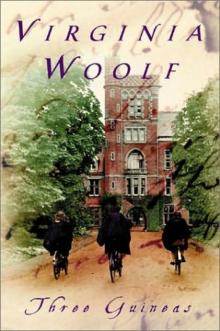 Three Guineas
Three Guineas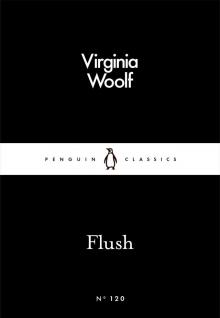 Flush
Flush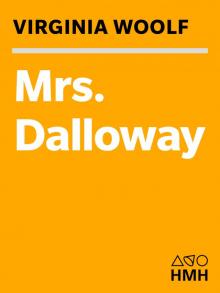 Mrs. Dalloway
Mrs. Dalloway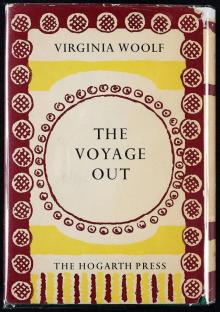 The Voyage Out
The Voyage Out A Writer's Diary: Being Extracts From the Diary of Virginia Woolf
A Writer's Diary: Being Extracts From the Diary of Virginia Woolf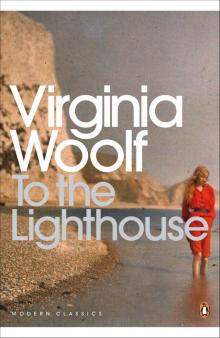 To The Lighthouse
To The Lighthouse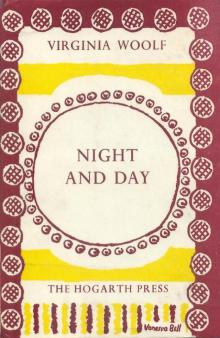 Night and Day
Night and Day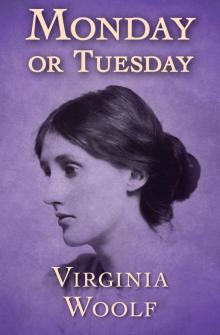 Monday or Tuesday
Monday or Tuesday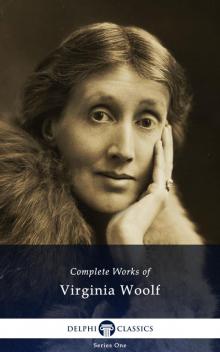 Complete Works of Virginia Woolf
Complete Works of Virginia Woolf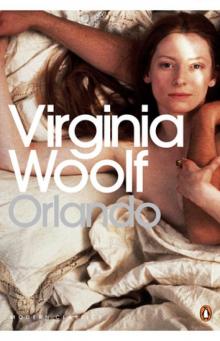 Orlando
Orlando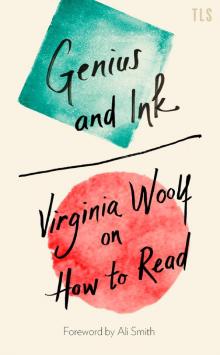 Genius and Ink
Genius and Ink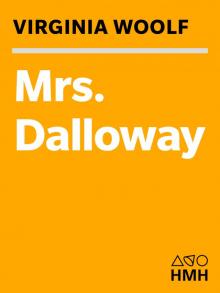 Mrs. Dalloway (Annotated)
Mrs. Dalloway (Annotated)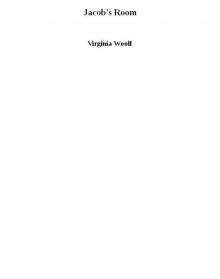 Jacob's Room
Jacob's Room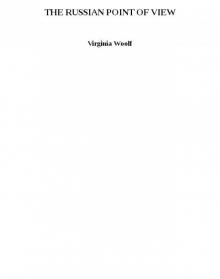 THE RUSSIAN POINT OF VIEW
THE RUSSIAN POINT OF VIEW A Writer's Diary
A Writer's Diary Woolf Short Stories
Woolf Short Stories